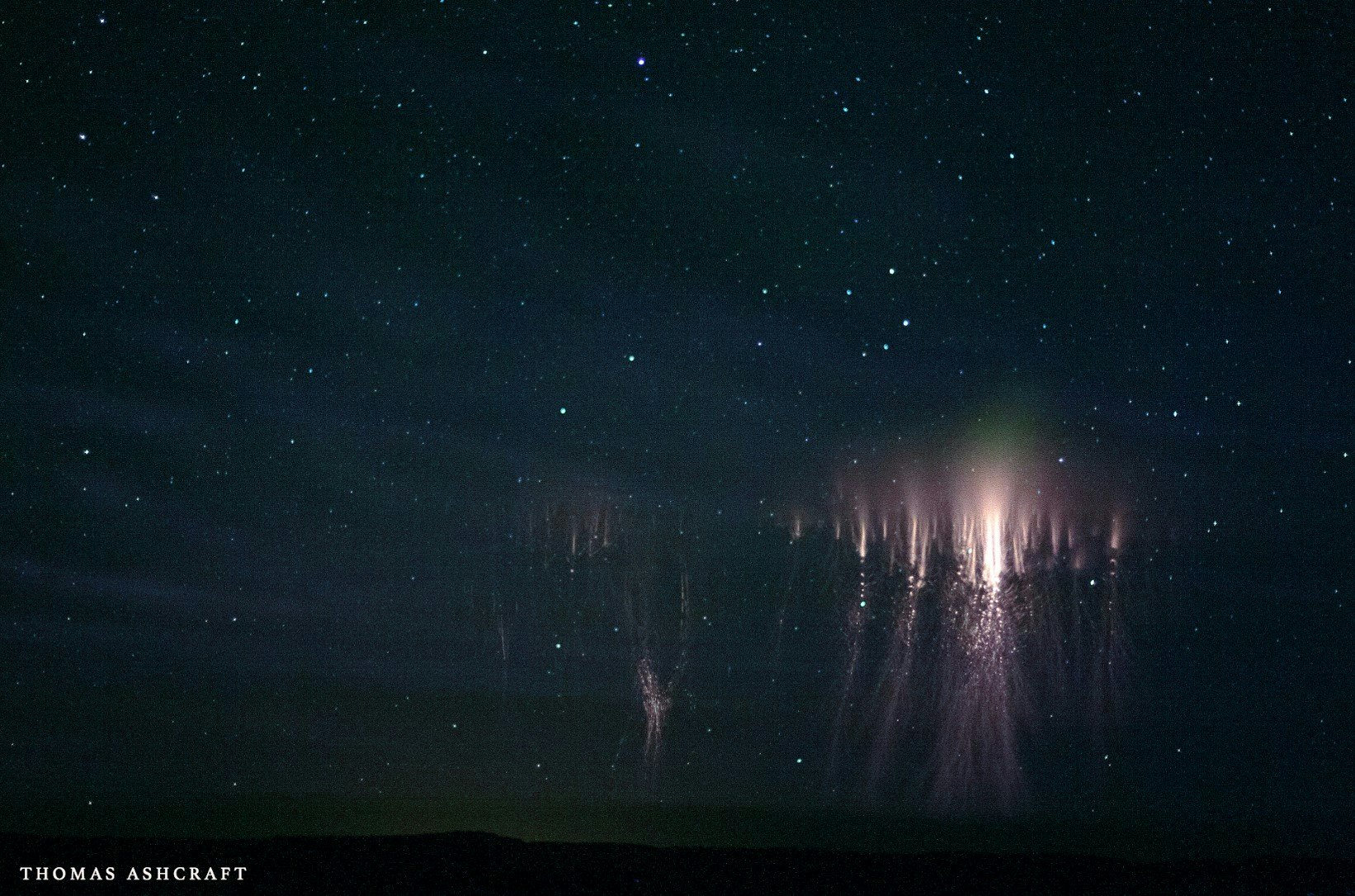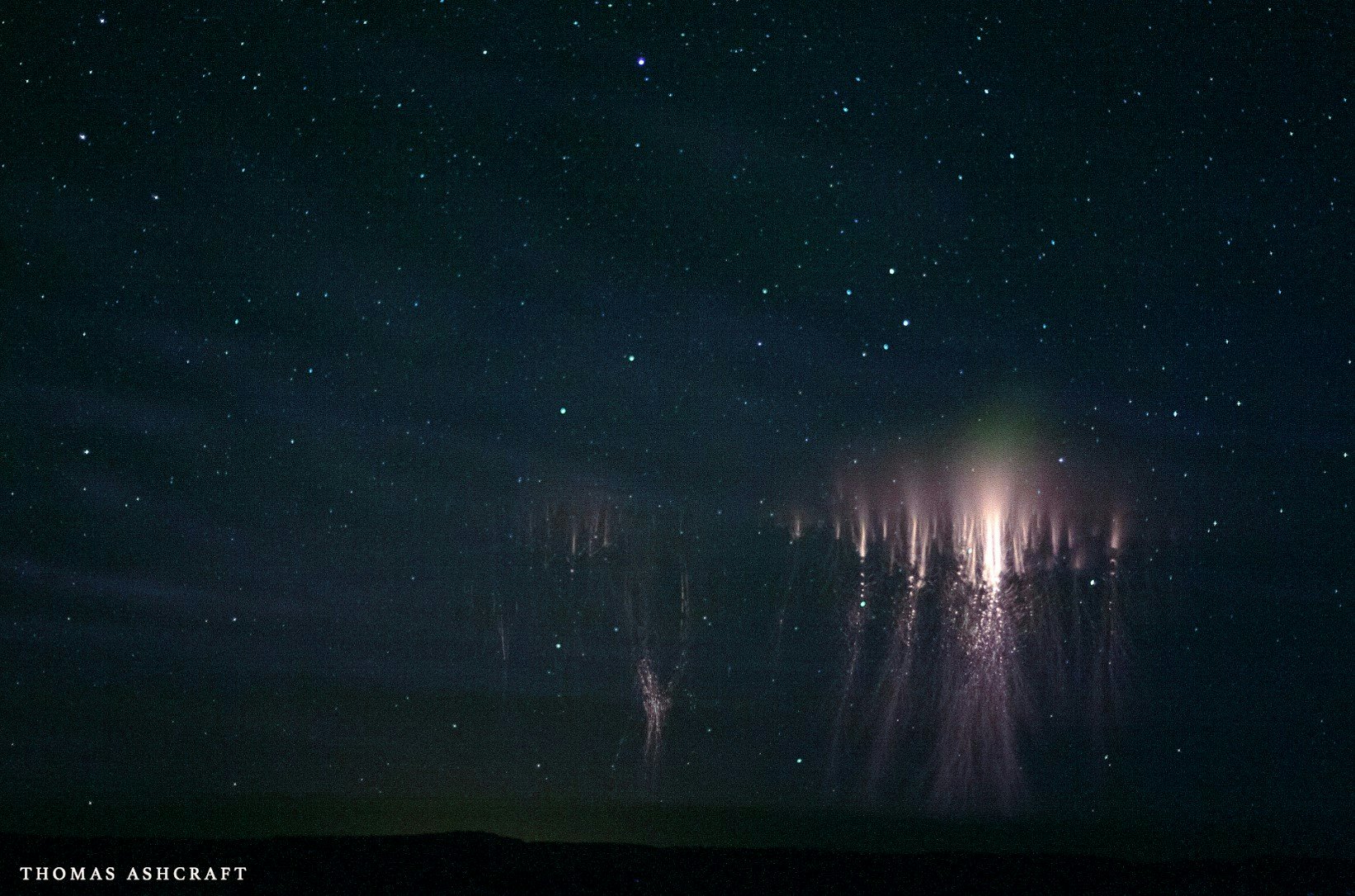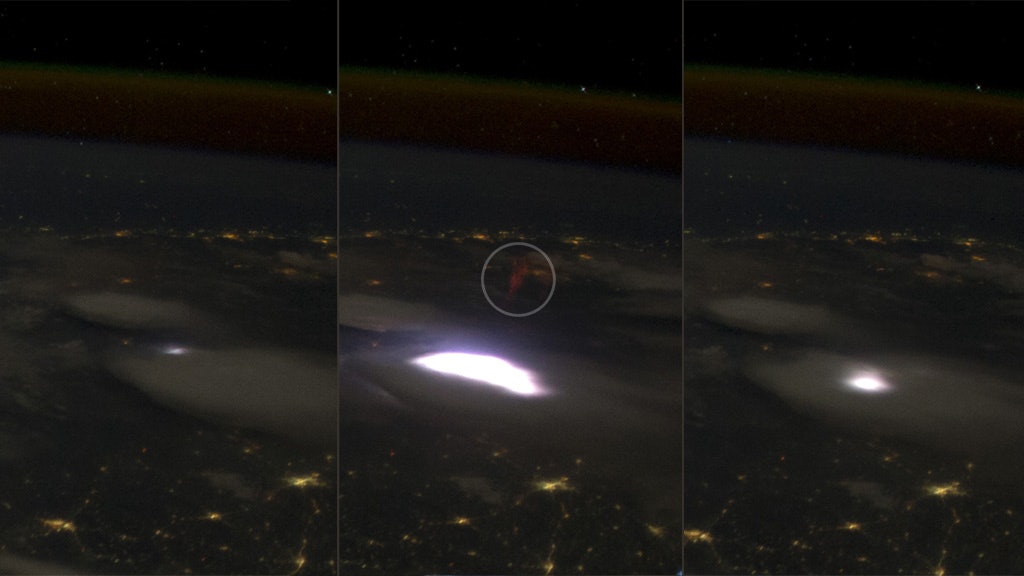
Four years ago, a green “ghost” appeared over a thunderstorm cloud in the Mediterranean Sea. To the delight of Spanish scientists, this ephemeral sighting finally offered a rare window into a little-known phenomenon playing out high in Earth’s skies.
When lightning strikes, it sometimes triggers the release of a violent optical emission at altitudes between 50 and 90 km above the thunderstorm cloud. These millisecond-long events, called transient luminous events (TLEs), are mysterious.
They can be shaped like jellyfish. These are known as sprites. Other TLE forms exist, boasting playful names like halos and elves. Just a few years ago, thrill seekers and citizen scientists discovered a new TLE, hovering above a sprite, called a ghost. While sprites appear red owing to the nitrogen in Earth’s atmosphere, and blue at more shallow altitudes due to higher atmospheric pressure, ghosts are green. They appear during and after the sprites, like fuzz on top of the jellyfish.

This puzzling afterglow was the subject of a new paper published in the journal Nature Communications on Tuesday.
Finding a Good Ghost
Researcher María Passas Varo led a team to use a special instrument called the Granada Sprite Spectrograph and Polarimeter (GRASSP), located outside Barcelona, to make a clear ghost sighting.
She and other atmospheric researchers were intrigued when, in the early half of 2019, storm chaser Hank Schyma noticed something new: in the wake of a sprite over the skies of Oklahoma, there was a greenish afterglow. He called the emerald-colored splotch a ghost, short for Green emissions from excited Oxygen in Sprite Tops. The idea behind the name was that, since oxygen is associated with the verdant tones of auroras, that the gas creates the ghosts.
Passas Varo, a telecommunications engineer, spectroscopist, and surveyor of atmospheric electricity based at the Astrophysics Institute of Andalucía in Spain, searched relentlessly for a new ghost. But finding one that GRASSP could glean a lot of data from was hard.
“We have analyzed more than 2,000 spectra, one by one, with the naked eye. We only found one good spectrum of a ghost. So, it is a lot of work. It is tedious,” she tells Inverse.

Then they finally found a science-worthy ghost, radiating from a thunderstorm cloud in the Mediterranean Sea on September 21, 2019. It was their best candidate for spectrographic analysis, in which the team peered into light from the ghost for clues about its composition.
They found a surprise. Oxygen was present, as they expected. But the team also found evidence of iron.
Iron is present in Earth’s upper atmosphere. It comes from the interplanetary dust particles that enter our atmosphere. But according to Passas Varo, it’s usually found at much higher altitudes.
Approximately one in every 100 sprites have ghosts. These events sometimes happen, but aren’t consistent. What makes a ghost appear could be a combination of different phenomena, and iron might provide a special clue.
A Need for Harmony
Cumulonimbus clouds are towers made of water droplets and ice crystals. These tiny particles journey along the updraft from the hot base of the cloud higher and higher until they reach the chilly top. Sometimes, they become larger molecules. If they bang against one another, they produce static electricity. These charged particles create lightning.
What goes down must be balanced in another form, and this need for harmony could be what causes the sprites and jets and all the other TLE oddities.
“When the lightning occurs, when the lightning strikes the ground, then an electric field appears above the cloud because you have to maintain, somehow, the balance of the electric field of the global electrical circuit,” Passas Varo tells Inverse. “Once you have this big discharge in the form of huge lightning downwards, then an electric field develops upwards. And this electric field develops a transient luminous event.”
One possible explanation for ghosts is that the sonic boom we know as thunder is, in one way or another, disrupting the iron from its usual altitude. Gravity waves on Earth, which are vertical, could also be playing a role in producing ghosts.
But what is clear is that a plethora of new observations are necessary. Passas Varo and the team have one good spectrum of a ghost but say it will take 99 more to get a clearer picture of what’s really happening.







